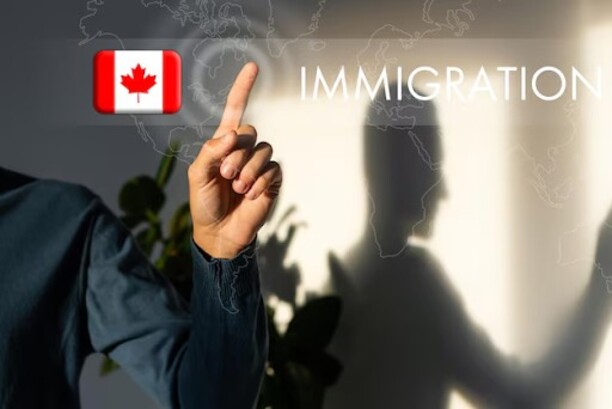

A recent survey finds many Canadians believe the 2025 immigration target remains too high, despite the government lowering the numbers. Freepik
A recent survey shows many Canadians still feel immigration levels are too high, even after the federal government reduced its targets for 2025. The poll, conducted in November 2024, followed an announcement that the number of permanent residents would drop from 485,000 in 2024 to 395,000 in 2025.
Even with this big cut, 54% of Canadians said the new target remains too high. This reflects growing public concern over the country’s ability to support a rising population, especially in the face of rising housing costs and stretched public services.
The survey revealed that over half of Canadians thought immigration levels were too much. Even after hearing the 2025 figure of 395,000, 52% still said the number was excessive. Just 37% felt it was the right amount, and only 5% believed it was too low.
When told the new target is 20% lower than 2024, 44% still believed it was too high. Only 13% said it was not enough.
For years, Canadians mostly talked about immigration in terms of where people came from or cultural differences. But that’s changing. Keith Neuman, a longtime immigration expert, said the concern has moved to whether Canada can support this many newcomers.
He said the idea of “capacity”—whether we have enough homes, hospitals, and services—is now at the heart of the debate. Neuman added, “The capacity issue has never really been something that Canadians have thought about, up to this point.”
Canada’s housing market is under pressure. Prices are up, supply is tight, and new arrivals are competing for homes. Hospitals are full. People are waiting longer for care. Social programs are stretched. These are the real-life issues Canadians face, and many now wonder if high immigration levels are making things harder.
Even though immigration helps fill jobs and grow the economy, more Canadians are now asking if the country can handle it all at once.
The government has responded. The original plan aimed for 500,000 new permanent residents in 2025. Now that number will be 395,000. The number will go even lower by 2027.
To help ease the pressure, 40% of new permanent residents in 2025 will be people already living in Canada on temporary visas. This will lower the number of new arrivals from overseas.
A spokesperson for the immigration minister said the government wants to find the right balance between bringing in skilled workers and keeping things manageable for cities and communities.
Immigration is now a hot topic in Canadian politics. Prime Minister Mark Carney has made it one of his key issues. He said Canada must welcome talent but keep immigration at sustainable levels.
Meanwhile, the opposition has pushed for even stronger limits, blaming the government for rising housing costs and weak planning. Some politicians are also questioning how Canada handles people without legal status.
Still, many Canadians do not see immigration as their top concern. Experts say people view it as a national issue, not one that affects them every day.
As the government prepares its 2026–2028 immigration plan, it faces a tough choice: how to support the economy without making daily life harder for Canadians. The government says it will continue to review public feedback and work with its partners to shape a balanced path forward.
Canada has always been proud of its diverse and welcoming culture. But now, growing demands on housing and healthcare are forcing the country to rethink how many newcomers it can support at once.
The big question remains: Can Canada stay open and welcoming while also staying affordable and livable?
Having an 'Identity Verified' badge or being 'Identity Verified' simply indicates that an individual has submitted information to complete our identity verification process or we have conducted internal verification using various authorized websites. While this process includes safeguards, it does not guarantee that the person is who they claim to be.
If you encounter any issues with this profile, please report them here. While all consultants who are verified have RCIC ID, we may not have the latest data in terms of their renewal/cancellation/discontinuation of their RCIC ID.
The "Verified Consultants" profiles are created using publicly available information, including data from the IRCC website, official consultant sites, other listing platforms, and social media. Immiperts.com is an independent platform, not affiliated with IRCC or any registered immigration consultants. To update, claim, or remove your profile, please contact us at [email protected].
╳